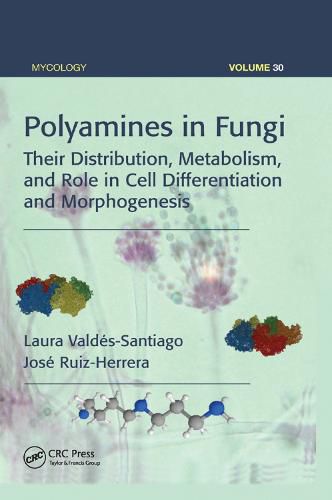Readings Newsletter
Become a Readings Member to make your shopping experience even easier.
Sign in or sign up for free!
You’re not far away from qualifying for FREE standard shipping within Australia
You’ve qualified for FREE standard shipping within Australia
The cart is loading…






It was not until recent years that the study of polyamines, their mechanisms of synthesis, and the roles they play in metabolism have flourished, becoming a fertile field of intense research. Polyamines in Fungi: Their Distribution, Metabolism, and Role in Cell Differentiation and Morphogenesis provides a complete overview of its topic. It is the first and only book to describe and analyze the roles of polyamines in fungi and compare them with the roles of polyamines in higher eukaryotes.
The book contains data on the distribution of polyamines, their physiological functions, mechanism of synthesis and regulation, phylogenetic analyses of the enzymes involved in their synthesis, their use as possible targets for the control of fungal diseases, and possible biotechnological and medical applications.
Based on work generated by the authors in their laboratory over many years, the book contains all the basic information to understand the similarities and differences of polyamine metabolism in eukaryotes. Additionally, it provides an up-to-date account of the contribution and potential use of fungi as models for the basic study of polyamines in comparison with other organisms.
$9.00 standard shipping within Australia
FREE standard shipping within Australia for orders over $100.00
Express & International shipping calculated at checkout
It was not until recent years that the study of polyamines, their mechanisms of synthesis, and the roles they play in metabolism have flourished, becoming a fertile field of intense research. Polyamines in Fungi: Their Distribution, Metabolism, and Role in Cell Differentiation and Morphogenesis provides a complete overview of its topic. It is the first and only book to describe and analyze the roles of polyamines in fungi and compare them with the roles of polyamines in higher eukaryotes.
The book contains data on the distribution of polyamines, their physiological functions, mechanism of synthesis and regulation, phylogenetic analyses of the enzymes involved in their synthesis, their use as possible targets for the control of fungal diseases, and possible biotechnological and medical applications.
Based on work generated by the authors in their laboratory over many years, the book contains all the basic information to understand the similarities and differences of polyamine metabolism in eukaryotes. Additionally, it provides an up-to-date account of the contribution and potential use of fungi as models for the basic study of polyamines in comparison with other organisms.